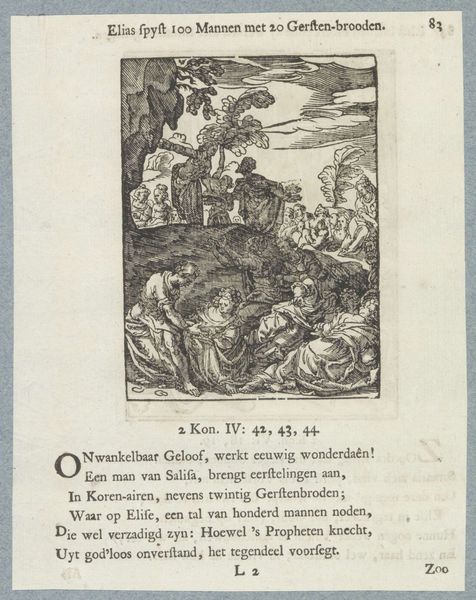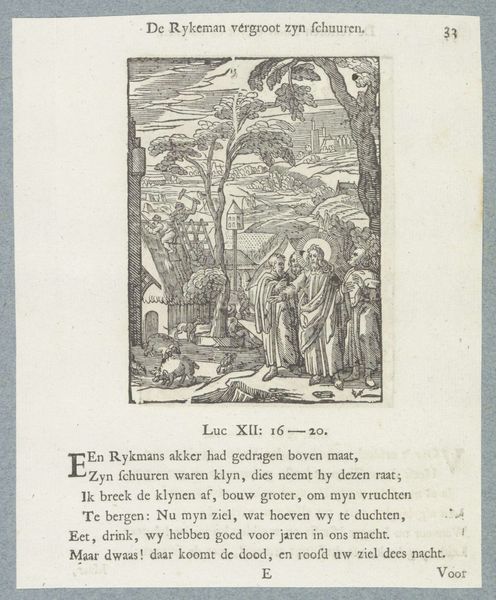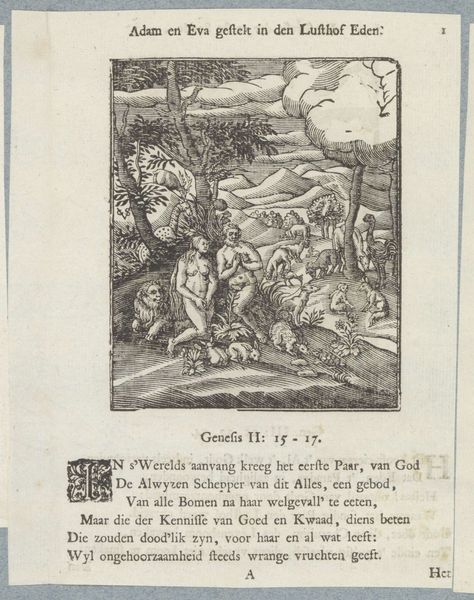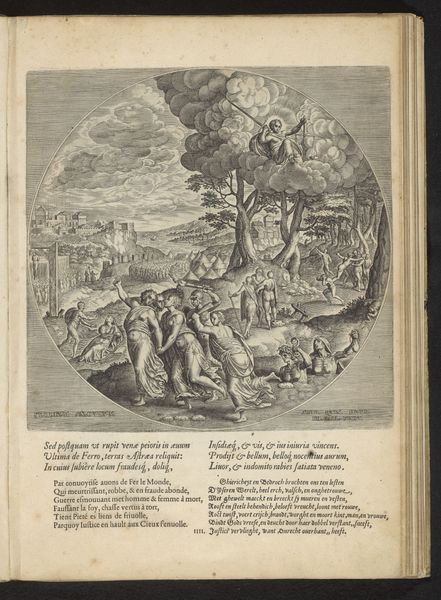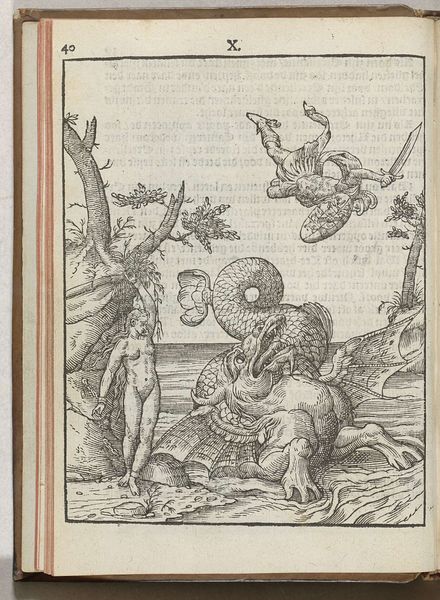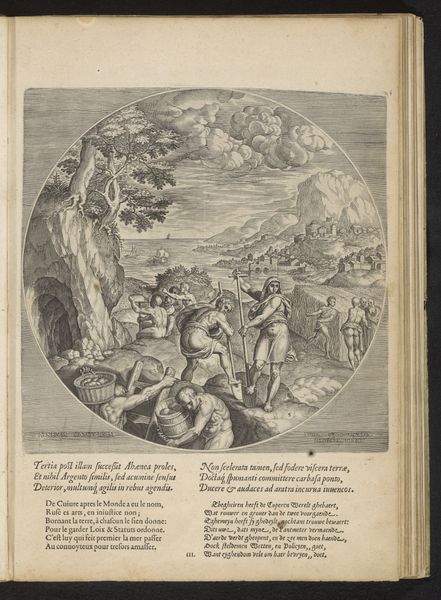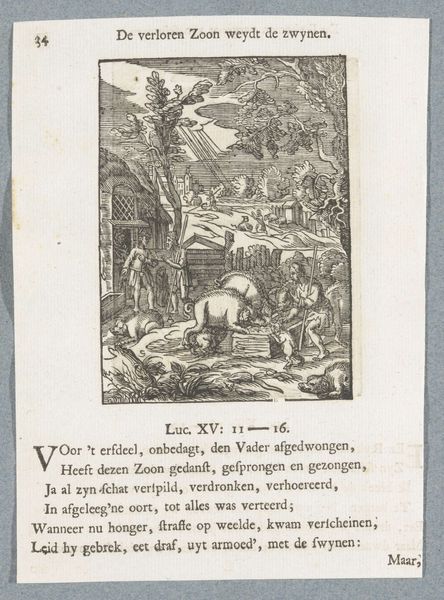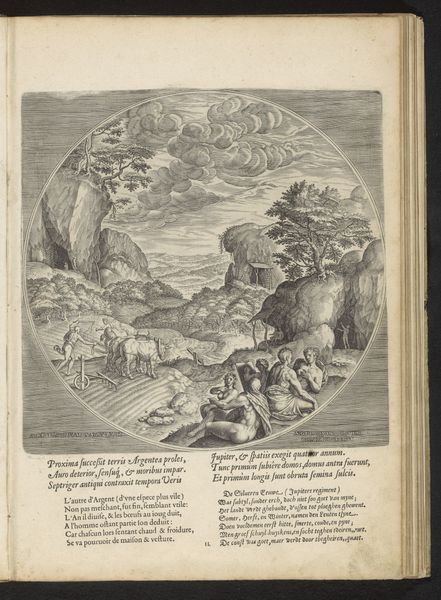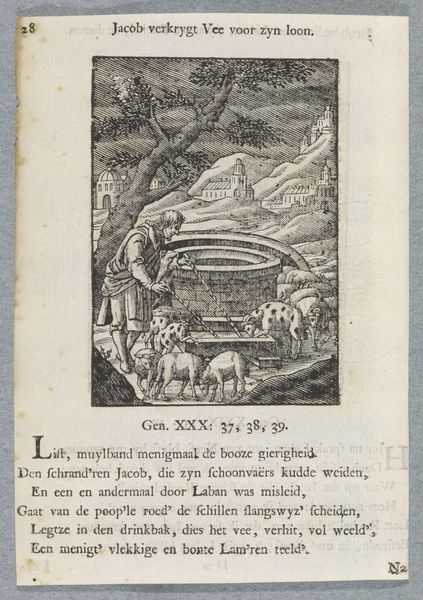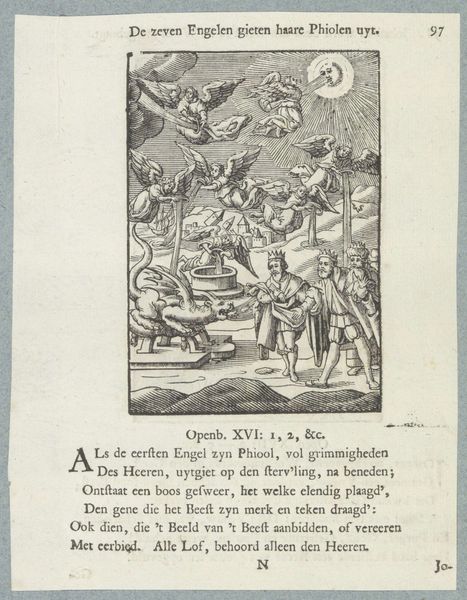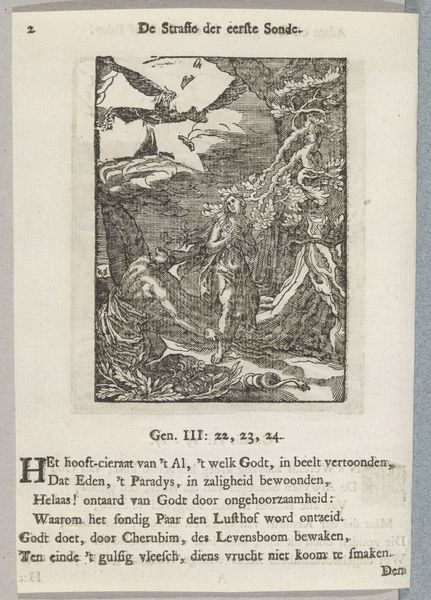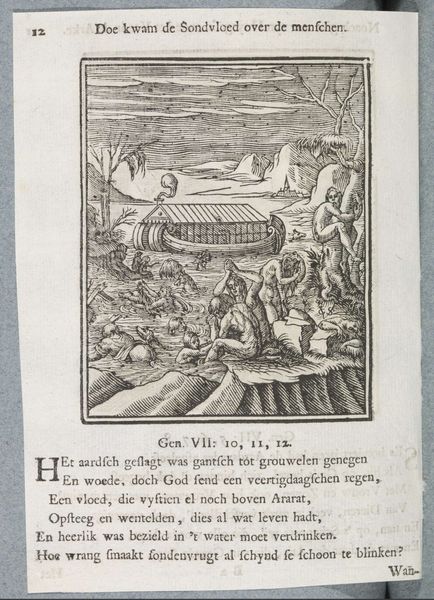
print, engraving
#
narrative-art
#
baroque
# print
#
history-painting
#
engraving
Dimensions: height 113 mm, width 90 mm, height 171 mm, width 132 mm
Copyright: Rijks Museum: Open Domain
Curator: This engraving, dating from around 1645-1740, presents us with a depiction of “Kain doodt Abel,” or “Cain Slaying Abel.” It is attributed to Christoffel van Sichem II, and is held in the Rijksmuseum. Editor: My first impression is the incredible density of the marks. There’s a near-claustrophobic feel achieved through the intricate cross-hatching. The figures appear trapped, almost suffocated, by the dense lines surrounding them. Curator: Absolutely. This piece reflects the baroque style's dramatic flair, yet, viewing it today, it resonates powerfully with broader conversations about power, jealousy, and the normalization of violence within patriarchal systems. Editor: The dynamism inherent in Baroque is certainly toned down, isn’t it? More like a simmer. But those swirling clouds mirroring the violence below--there’s a semiotic language at play there linking the earthly deed with divine judgment. Curator: Indeed, placing it within historical and religious contexts helps unpack its multiple layers. It urges viewers to question how these narratives of fratricide serve ideological purposes. We’re prompted to consider Cain’s actions not solely as individual wrongdoing but stemming from a complex interplay of socioeconomic and divine factors that perpetuate systems of inequality and violence. Editor: From a purely visual standpoint, consider how Sichem used light and shadow. That chiaroscuro isn’t merely illustrative; it emphasizes the stark moral contrast – good versus evil, brother versus brother. And it works, even within the rather crude cutting. Curator: Ultimately, viewing “Kain doodt Abel” is an exercise in considering uncomfortable truths. It compels us to critically engage with societal power imbalances, recognizing how historical artworks still fuel discussions on identity, justice, and ethical behavior in the present day. Editor: I am drawn to its powerful and compact symbolic language which invites layers of visual interpretation even without any historical context. The beauty is there, though born of a brutal subject.
Comments
No comments
Be the first to comment and join the conversation on the ultimate creative platform.
